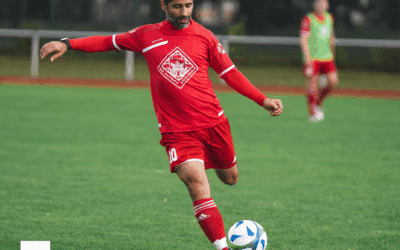Introduction
CrossFitTM is a branded form of high-intensity training that has reached unprecedented levels of following and participation globally. This variation of HIIT, called high-intensity functional training (HIFT) in the in the sport science literature (2), systematically requires high levels of aerobic, anaerobic and neuromuscular demands, which may help to develop a range of physical qualities simultaneously (2).In practice, compared with traditional HIIT formats that often use cyclical activities (e.g. cycling, rowing, running, swimming), HIFT integrates technical exercises from sports such as Olympic weightlifting and gymnastics.Therefore, HIFT could be considered as a novel approach adding to established HIIT formats (i.e. short and long intervals, repeated sprint training, sprint interval training and game-based HIIT). As followers of HIIT Science will know, there are three key physiological targets involved during HIIT: the aerobic oxidative system, the short-term anaerobic glycolytic energy pathway and the neuromuscular and musculoskeletal systems (4). Therefore, it is possible to precisely characterise the acute physiological responses of different HIIT into six formats (4). To achieve a specific desired physiological target, coaches can manipulate up to 12 different variables (Figure 1).
In this blog post, we will show how some of those variables could be used in the context of HIFT to achieve specific physiological responses and training goals.

Figure 1. The 12 variables that can be manipulated to prescribe different HIIT sessions.
Exercise modality
How exercise modality alters the metabolic and neuromuscular responses to any given workout has not been widely explored in the context of HIIT. HIFT includes a variety of movements, such as Olympic weightlifting and gymnastics, which have received even less attention.In the context of HIFT, different exercise modalities could elicit similar aerobic (≈90 %HRmax) and anaerobic responses (blood lactate:10 to 12 mmol∙L-1) (6,7).However, the neuromuscular responses for each modality may be distinctly different, with Olympic weightlifting and gymnastics exercises inducing a higher neuromuscular load compared with cyclical exercises performed alone (6). Although these findings are important to consider for practitioners considering HIFT, more work is needed to confirm the findings, as few studies have investigated the neuromuscular responses and the rate of lactate accumulation (which is a better indicator of anaerobic contribution) to HIFT.
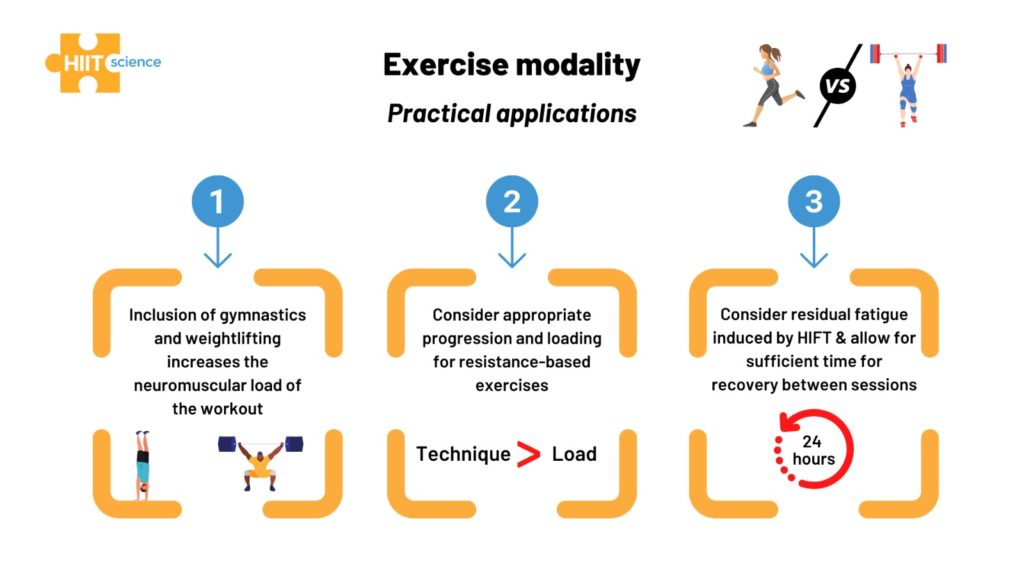
Figure 2. Practical recommendations regarding exercise modality manipulation in the context of HIFT .
Work intensity and duration
HIFT does not use any of the usual prescription methods (maximal aerobic speed, power, aerobic speed reserve or heart rate zones) to determine workout intensity (4). Indeed, most movements of HIFT are not cyclical enough to be performed continuously (e.g. an individual’s VO2max cannot be determined through resistance-based exercise). Additionally, some of the movements are not measurable (e.g. push-up or muscle-up), which make the use of the traditional 1RM prescription problematic. A recent study investigated whether the rating of perceived exertion (RPE) method could be used to control the response to a HIFT session (8). Using an RPE-guided condition, participants were asked to maintain a level 6 RPE (based on BorgCR-10 scale) throughout the workout. For this RPE condition, subjects performed a lower number of repetitions and showed a correspondingly lower blood lactate concentration compared with an ‘all-out’ workout condition. Interestingly, the % of HRmax was similar for both conditions (8).These results suggest that submaximal RPE targets (i.e. 6-8) can be used to manipulate the physiological response of a HIFT session to elicit a large aerobic (Type 2) response alongside a lower anaerobic contribution (see figure 1).It is likely (not assessed) that the neuromuscular responses followed a similar pattern to the anaerobic response, as the number of repetitions performed were also lower in the RPE-guided group compared with the group performing the session with maximum effort. Likewise, some adjustments of the exercises can control the intensity (e.g. scaled version of benchmark workouts, % 1 repetition maximal [%1RM], velocity-based training), but such adjustments have yet to be investigated. Regarding the duration of a HIFT session, Kliszczewicz et al. (3) compared the effect of a short (<5 min) and long (15 min) HIFT workout and reported no substantial difference between the two HIFT workouts in terms of the aerobic and anaerobic responses. This suggests that short and long HIFT sessions may have similar metabolic responses. Despite these interesting results, further work is needed to understand how the work intensity and duration may elicit different metabolic and neuromuscular responses in the context of HIFT.

Figure 3. Practical recommendations regarding work intensity and duration manipulation in the context of HIFT .
Rest interval
Manipulations of the duration and intensity of the rest interval directly impact on the repletion of work capacity and subsequent physiological response of the HIIT session (4). However, in HIFT workouts, the rest interval is generally self-paced (2). For instance, only the number of sets and repetitions or the total time of the exercise is prescribed.There is little information available concerning the manipulation of the rest interval in the context of HIFT.However, recovery is central to the ability to produce/replicate a sufficient intensity to produce a physiological stimulus and kickstart the training adaptation process (1). HIFT also employs high skill movement patterns, such as weightlifting or gymnastics routine derivatives.
Therefore, increasing or decreasing the duration of the recovery period could be important to optimise the quality of the movement during HIFT work bouts and, subsequently, the magnitude of the metabolic and neuromuscular response (5).For example, lengthening the rest period would target HIIT Type 2 responses (mainly aerobic and neuromuscular with low or no anaerobic contribution). Conversely, shortening the rest period would likely increase the anaerobic contribution, shifting to HIIT Type 3 and Type 4.
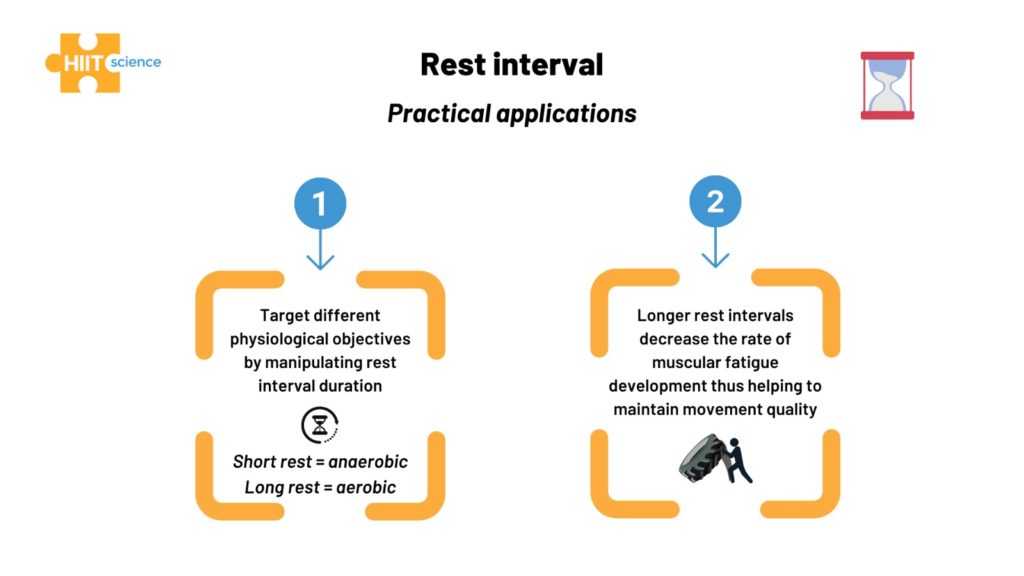
Figure 4. Practical recommendations regarding rest interval manipulation in the context of HIFT.
Is HIFT appropriate for high performance athletes?
The “toothpaste theory” nicely illustrates a potential issue when it comes to using HIFT with elite athletes (4).This approach can be likened to squeezing toothpaste only from the middle of the tube (i.e. targeting both metabolic and neuromuscular adaptations simultaneously), which is a useful strategy for only a given period.Highly trained athletes require a more focused approach (i.e. separate HIIT and power, strength, and speed work) to get all the ‘toothpaste’ out (alternatively, squeezing strongly and consistently on just one side, and before the other).
 More research is necessary to examine the long-term training effect of HIFT in elite athletes, and the possible occurrence of an “interference effect” (see chapter 7 HIIt Science Book) on subsequent physiological adaptations and exercise performance following HIFT.
More research is necessary to examine the long-term training effect of HIFT in elite athletes, and the possible occurrence of an “interference effect” (see chapter 7 HIIt Science Book) on subsequent physiological adaptations and exercise performance following HIFT.
Conclusions
CrossFitTM , or HIFT, is a relatively new HIIT approach that involves specific exercise modalities, including gymnastics routines and Olympic weightlifting. These exercises increase the neuromuscular load of the sequences (i.e. favoring a HIIT type 4 response for most of the HIFT sessions). However, by manipulating a number of key variables, such as the intensity or the duration of the work intervals, and rest interval durations, practitioners can target different physiological responses (see Figure 5).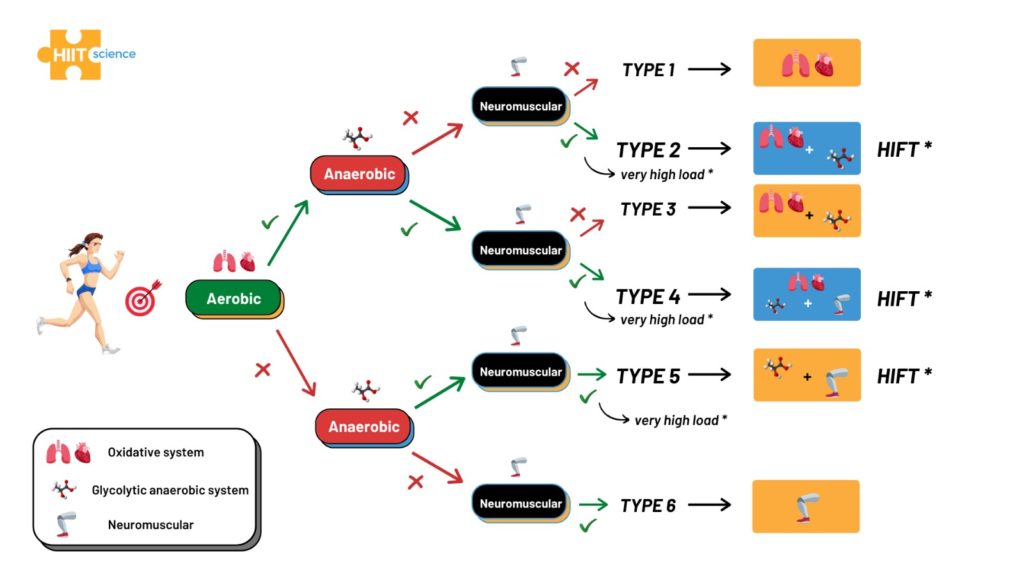
Figure 4. HIIT types classification. * denotes the very high neuromuscular load achieved when using HIFT. Ana Glycolytic system: glycolytic anaerobic system.
Additionally, as HIFT requires high levels of both strength and metabolic responses, this HIIT format can be time-efficient when it comes to training diverse fitness variables. However, HIFT must be carefully programmed to avoid excessive fatigue and potential interference effects when working with higher level athletes.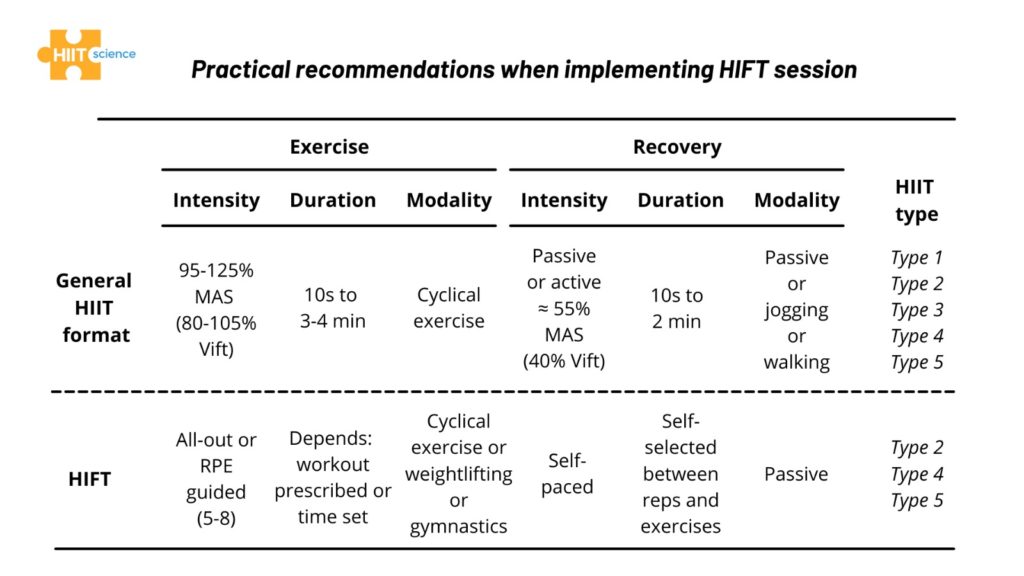 Table 1. Practical recommendations when implementing HIFT session. * The different HIIT formats are short and long intervals, repeated sprint training, sprint interval training and game-based HIIT. $ MAS: Maximal aerobic speed. % VIFT: the peak speed reached in the 30-15 intermittent fitness test.
Table 1. Practical recommendations when implementing HIFT session. * The different HIIT formats are short and long intervals, repeated sprint training, sprint interval training and game-based HIIT. $ MAS: Maximal aerobic speed. % VIFT: the peak speed reached in the 30-15 intermittent fitness test.
Useful links
HIIT Science Website HIIT Science courses HIIT Science BookReferences
- Bishop, PA, Jones, E, and Woods, AK. Recovery from training: a brief review: brief review. J strength Cond Res 22: 1015–24, 2008.
- Feito, Y, Heinrich, KM, Butcher, SJ, and Poston, WSC. High-Intensity Functional Training (HIFT): Definition and Research Implications for Improved Fitness Yuri. Sports 6: 1–19, 2018.
- Kliszczewicz, BM, Williamson-reisdorph, C, Kliszczewicz, B, Williamson, C, Bechke, E, Mckenzie, M, et al. Autonomic Response to a Short and Long Bout of High-Intensity Functional Autonomic response to a short and long bout of high-intensity functional training. J Sports Sci 36: 1872–1879, 2018.
- Laursen, P and Buchheit, M. Science and Application of High-Intensity Interval Training. Human kine. 2019.
- Mangine, GT, Dusseldorp, TA Van, Feito, Y, Serafini, PR, Id, AGB, and Gonzalez, AM. Testosterone and Cortisol Responses to Five High-Intensity Functional Training Competition Workouts in Recreationally Active Adults. Sports 6, 2018.
- Maté-muñoz, JL, Lougedo, JH, Barba, M, Cañuelo-márquez, AM, Guode-, J, García-fernández, P, et al. Cardiometabolic and Muscular Fatigue Responses to Different CrossFit ® Workouts. J Sport Sci Med 17: 668–679, 2018.
- Maté-muñoz, L, Lougedo, JH, Barba, M, and Garcı, P. Muscular fatigue in response to different modalities of CrossFit sessions. PLoS One 12: 1–17, 2017.
- Tibana, RA, Sousa, N, Prestes, J, Nascimento, D da CN, Ernesto, C, Neto, JHF, et al. Is Perceived Exertion a Useful Indicator of the Metabolic and Cardiovascular Responses to a Metabolic Conditioning Session of Functional Fitness? Sports 7, 2019.



